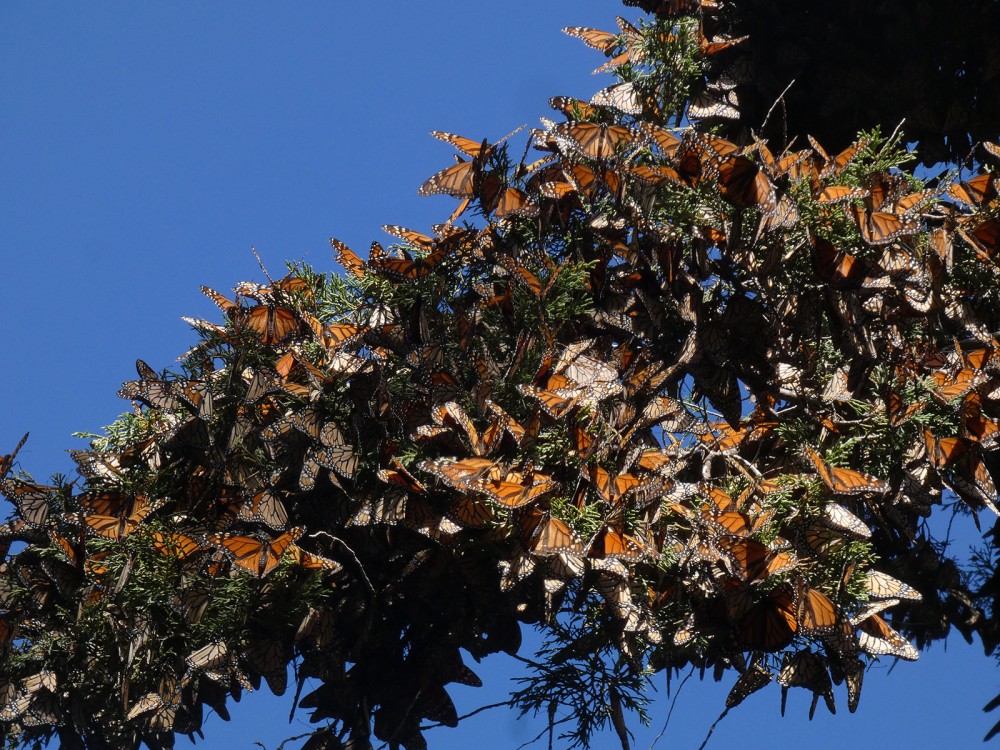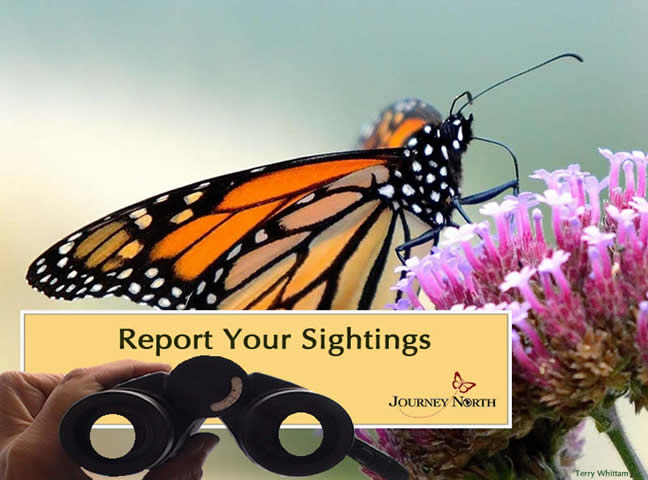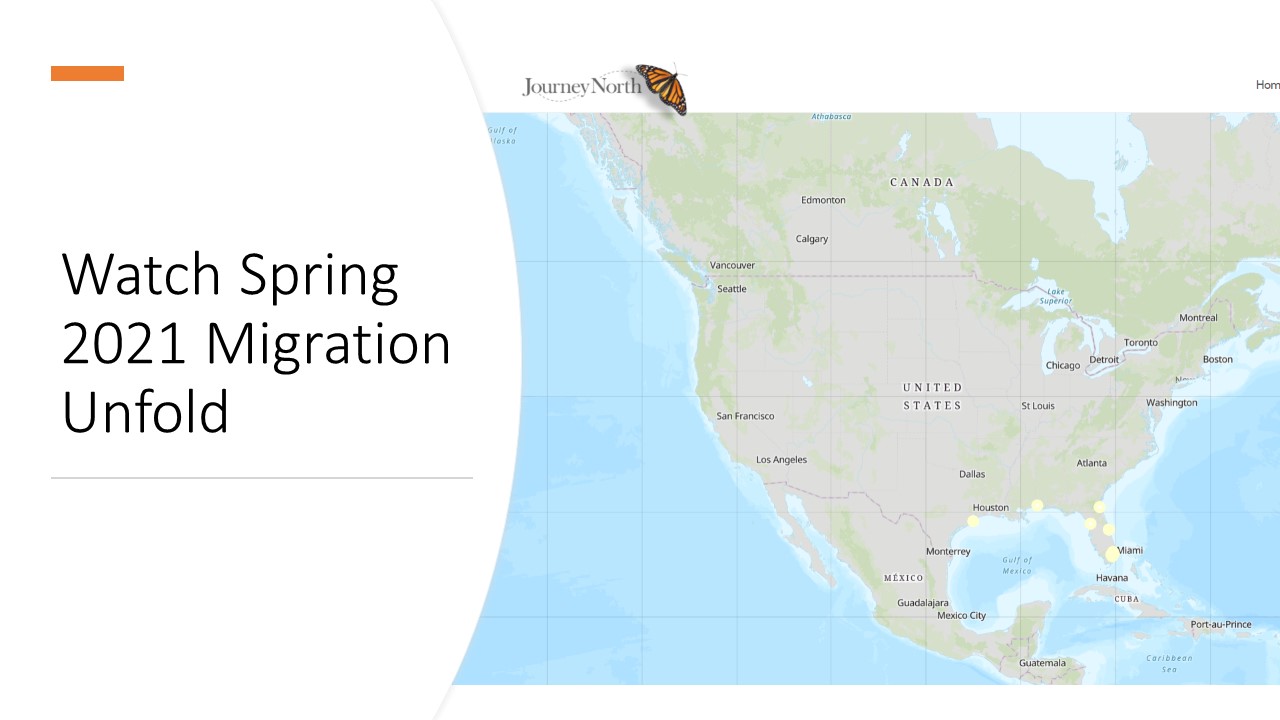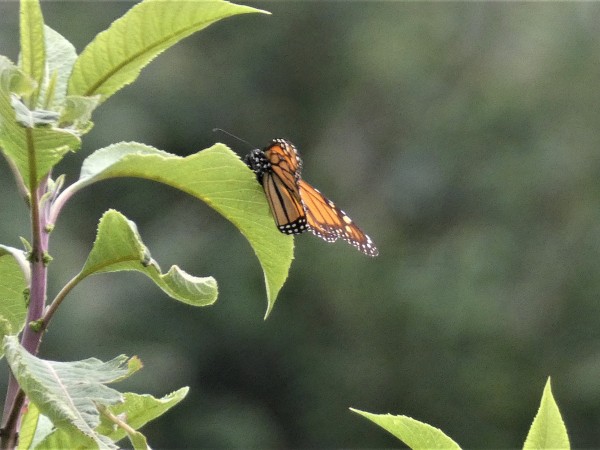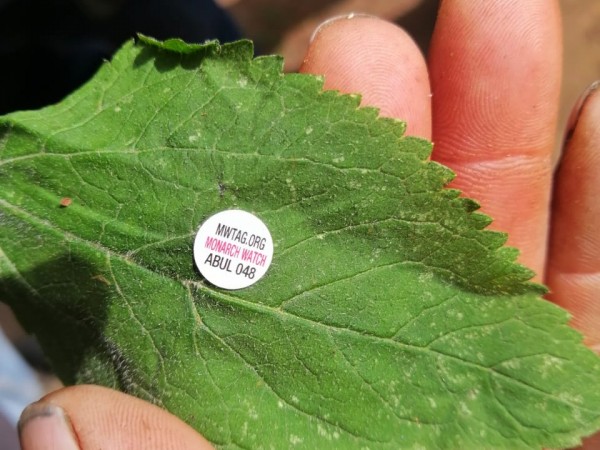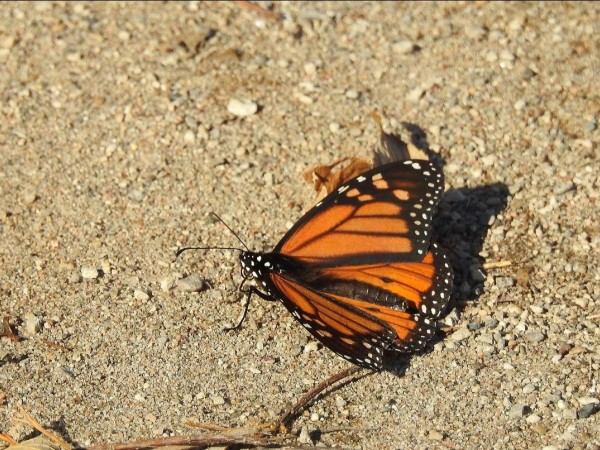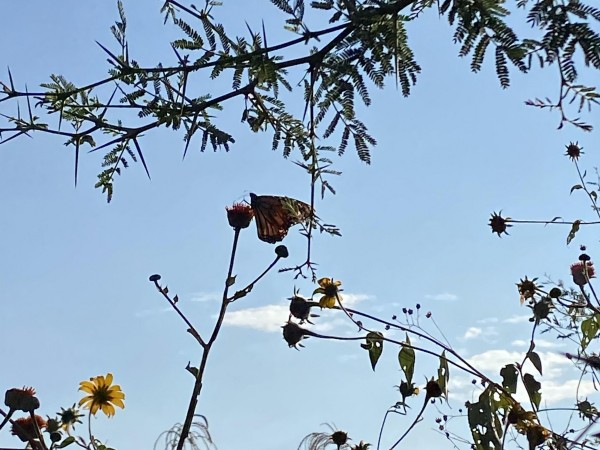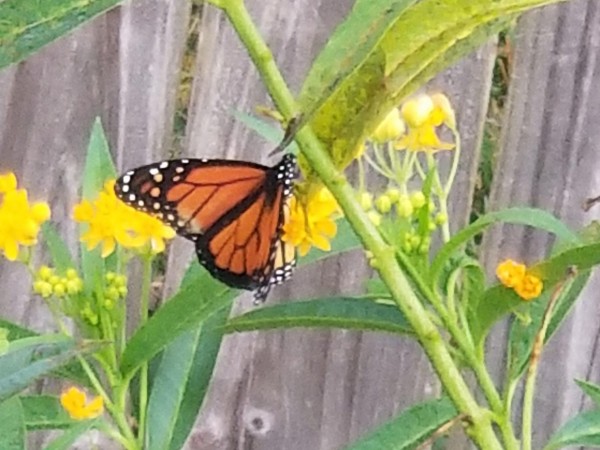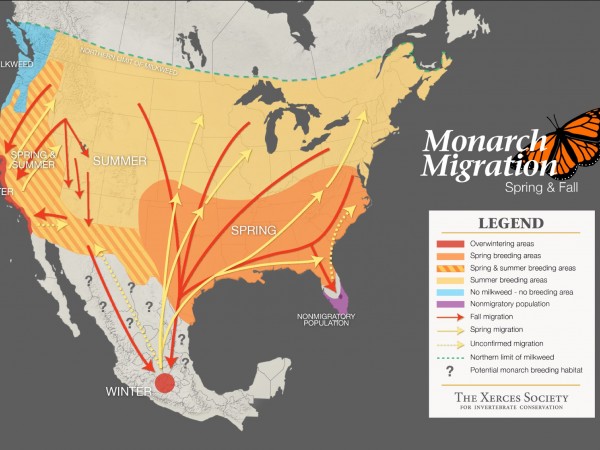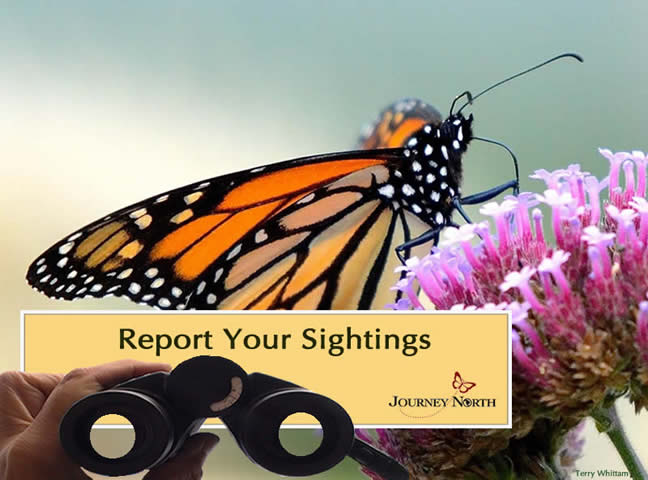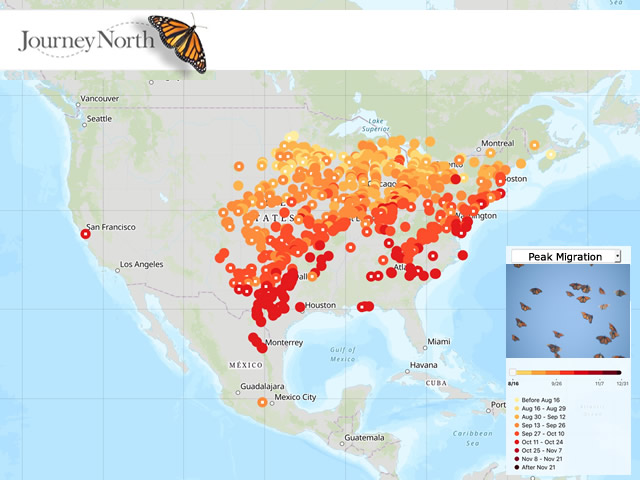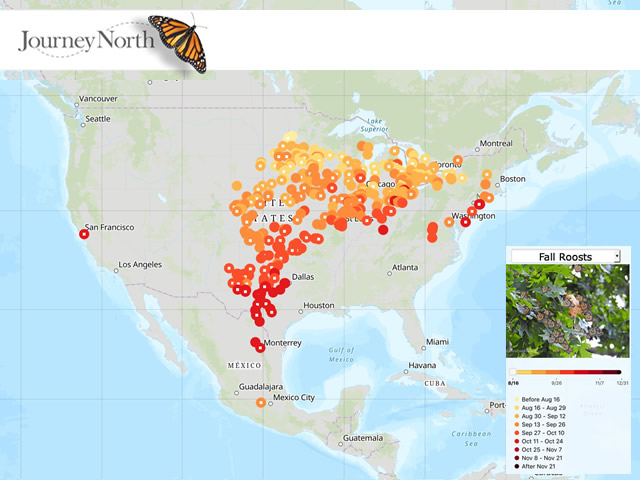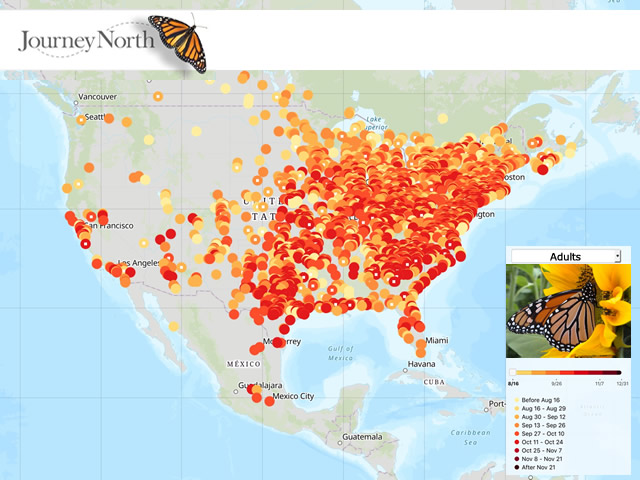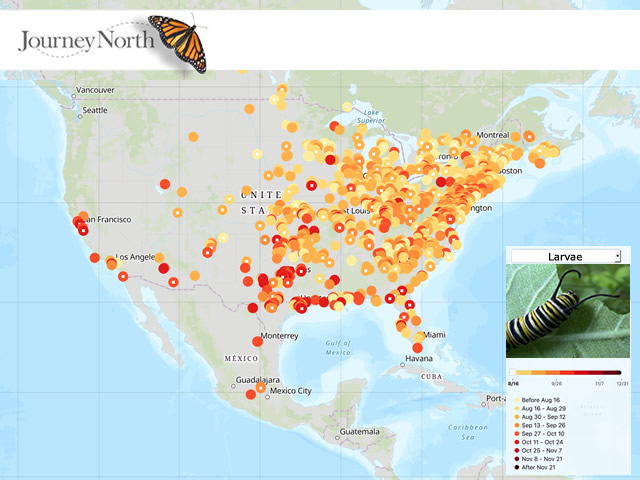Fall Migration is Winding Down
Another Great Season – Thank You!
Although some monarchs are still on the move, this is the end of our weekly Monarch News Updates for the fall migration season. And what a fascinating season it has been! Journey North citizen scientists have contributed 13,000 monarch reports (and counting). Thank you for all your submissions and all you do on behalf of monarch tracking. Your observations provide valuable information and paint a real-time picture of monarch migration. Amid these difficult times, we hope these updates have provided you a sense of joy and wonder.
Letter From Estela Romero: November 28th Is Opening Day!
Estela Romero reports on the build up to the opening of Sierra Chincua and El Rosario sanctuaries on November 28th, and spotlights reforestation efforts that started last summer. She also expresses some concern about current weather conditions and how monarchs might be affected. She writes, "All seems ready for the 2020-2021 season when doors will open on November 28th . . . We are concerned about the hot temperatures, dry conditions, and intense sunlight. We await for the experts to comment on whether these conditions will alter the monarch overwintering cycle and their behavior. We hope that weather conditions change substantially over the coming weeks and months."
Read more of Estela Romero's Sixth Letter of the Season: November 28th Is Opening Day!
Letter From Ellen Sharp: A Reminder From the Butterflies
At Cerro Pelon Sanctuary, Ellen Sharp highlights the first recovered monarch tag of the season and reflects on the sense of interconnectedness we can all gain from monarchs. She writes, "Monarch Watch sold the tag with serial number ABUL 048 to the Hormel Nature Center in Austin, Minnesota, where on August 28, a child in a monarch tagging class pressed this dot to the hindwing of a wild male monarch and released him onto a flower-filled prairie. In the intervening 85 days, this butterfly flew 2,016 miles south before shedding the sticker that would brighten Francisco’s work break."
Still On Their Way
Darlene in Point Pelee National Park, ON: "Two monarchs seen at Point Pelee . . . This is the latest I've seen monarchs at the Park. In 2016 I saw 3 on Nov. 18th." (11/20/2020)
Paige in Cape May Point, NJ: "Today is the latest I've seen so many monarchs here. We were standing on a dune crossover in Cape May Point and witnessed monarch butterflies flying by for a few hours. I would say it was 1 per minute for at least two hours." (11/21/2020)
Veronica in Malinalco, MEX: "Las alas de la mariposa estaban muys danadas. Aún así podría volar." [Translation: The butterfly's wings were badly damaged. Still it could fly."] (11/21/2020)
Chris in League City, TX: "I came outside at 12:08 and counted 10 monarchs around the yard. They were frolicking around in pairs and singles were hitting the flowers. In the milkweed patch I've got 9 caterpillars and found one chrysalis." (11/22/2020)
Winter Reporting
The monarch story continues during December, January and February. Please continue to report your observations:
Adult Monarchs
- Report to Journey North all monarchs you observe during December 2020 and January and February 2021. Monarchs can be present during these months in many southern and southwestern U.S. states. Journey North will be sharing information about a special collaborative effort to track monarch activity in the Gulf states of Texas, Louisiana, Mississippi, Alabama, and Florida as well as Georgia, South Carolina and North Carolina. Stay tuned to learn more if you live in these states.
Monarch Eggs, Monarch Larvae
- Report to Journey North all monarch eggs and larvae you observe so we can learn more about monarch breeding activity during these winter months.
Fall Monarch Migration 2020
Please report all monarchs you see: Adults, Eggs & Larvae, Overnight Roosts, Peak Migration Events

